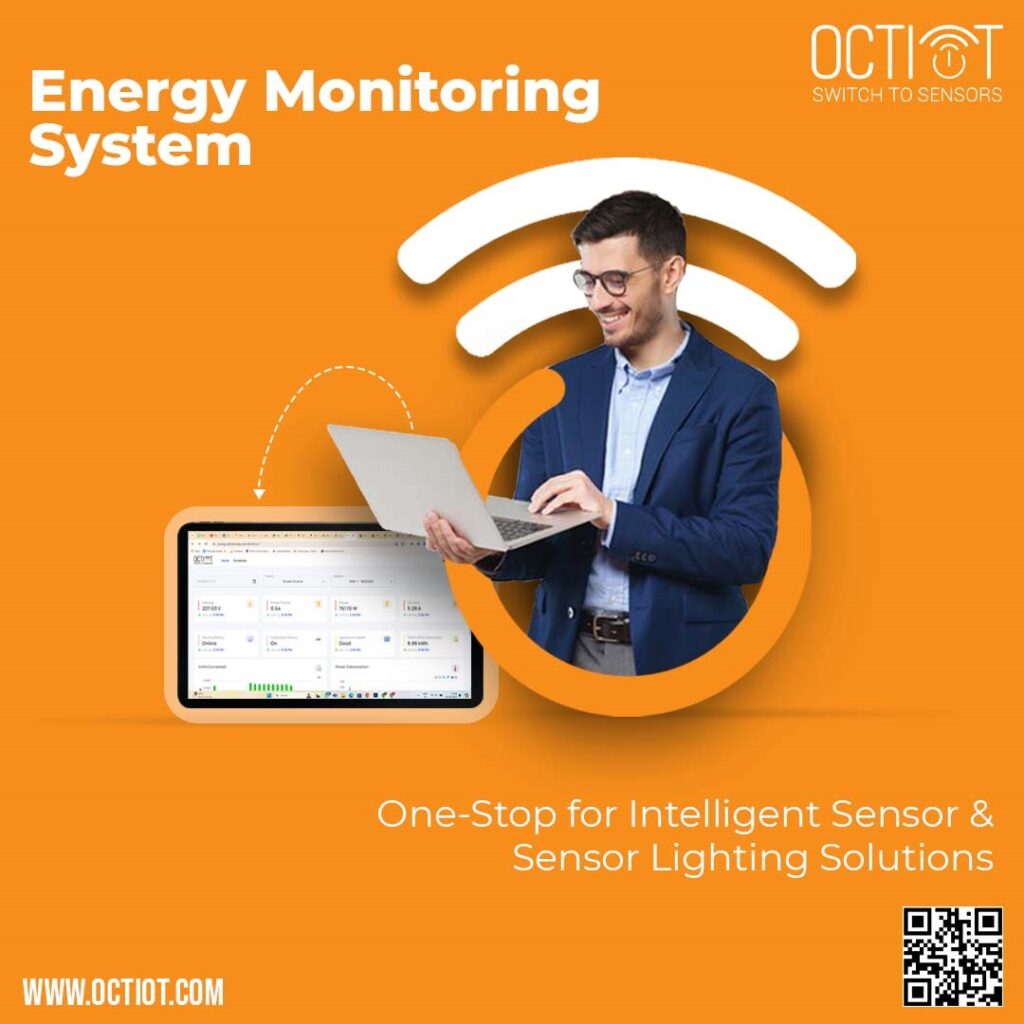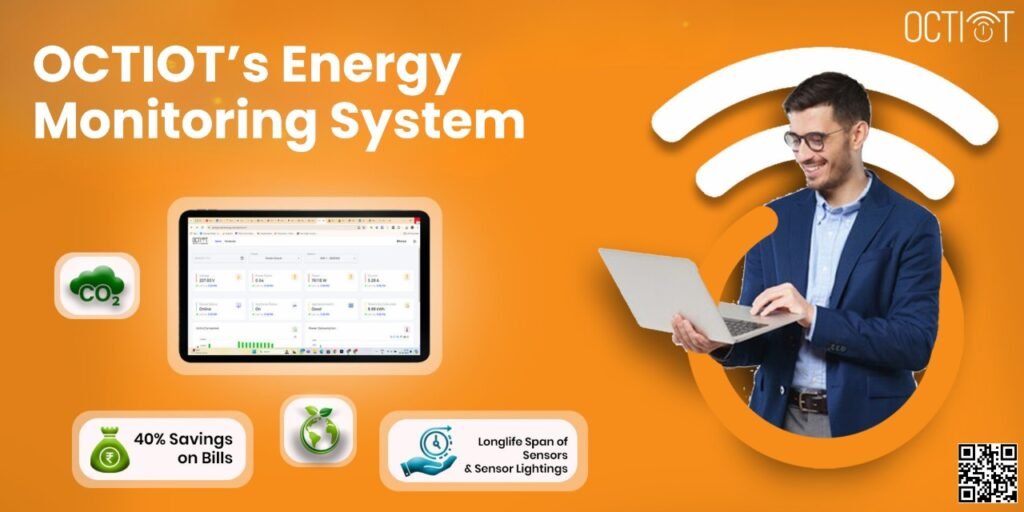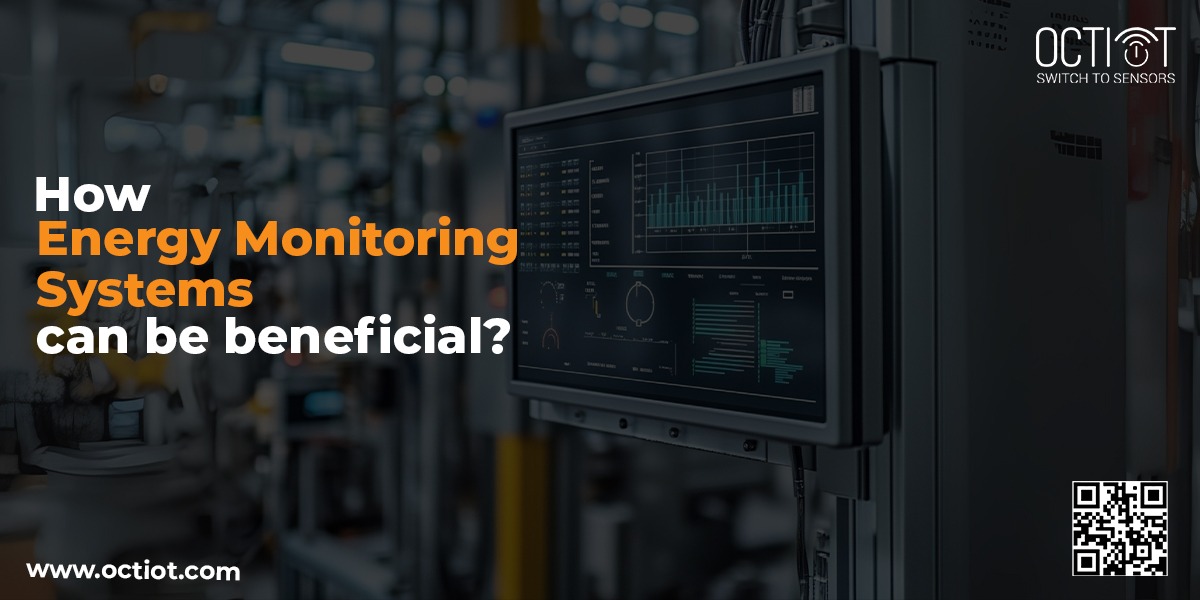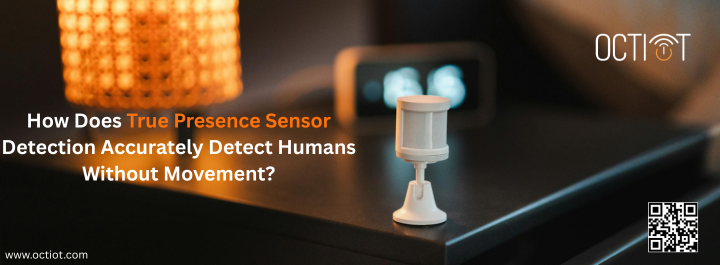In today’s world, energy efficiency is no longer just a buzzword; it has become a critical component of sustainable living and responsible business practices. As global energy demands continue to rise, there is an increasing need to optimize energy consumption and reduce waste. This drive towards efficiency is not only essential for reducing operational costs but also for minimizing the environmental impact of energy usage.
Energy monitoring systems (EMS) have emerged as vital tools in this endeavour. These systems provide real-time insights into energy consumption patterns, enabling businesses and households to make informed decisions about their energy use. By offering detailed data and analytics, Energy monitoring systems help identify inefficiencies, optimize energy usage, and ultimately reduce costs and carbon footprints.
Here in this blog, we’re gonna talk about “How energy monitoring systems can be beneficial?”
What Are Energy Monitoring Systems?
Energy Monitoring Systems (EMS) are sophisticated tools designed to track, measure, and analyze energy consumption in real time. These systems offer comprehensive insights into how energy is being used within a building or facility, allowing users to make data-driven decisions to improve efficiency and reduce waste. Energy Monitoring Systems are crucial for both businesses and homeowners aiming to optimize their energy usage, lower operational costs, and contribute to environmental sustainability.

Key Components of an Energy Monitoring Systems
- Sensors:
- Sensors are the frontline components that detect and measure various parameters related to energy consumption, such as voltage, current, and power. These devices are installed at different points within the electrical system to capture detailed data on energy usage.
- Meters:
- Meters, often integrated with sensors, are used to quantify the amount of energy being consumed. They provide precise readings of energy usage over time, serving as the foundation for data analysis within the Energy Monitoring Systems.
- Data Logger:
- A data logger collects and stores the information provided by sensors and meters. It acts as a bridge between the hardware components (sensors/meters) and the software platform, ensuring that all data is accurately captured and available for analysis.
- Software Platform:
- The software is the brain of the Energy Monitoring Systems, where all collected data is processed, analyzed, and presented. This platform typically includes user-friendly dashboards, analytics tools, and reporting features. It allows users to visualize energy consumption patterns, set benchmarks, and generate reports for better decision-making.
- Communication Network:
- The communication network enables the seamless transfer of data from sensors and meters to the software platform. This network can be wired or wireless, depending on the setup and requirements of the facility.
How Energy Monitoring Systems Work
- Data Collection:
- The process begins with sensors and meters collecting real-time data on energy consumption. These devices monitor various aspects of energy usage, such as electricity, gas, or water, depending on the system’s configuration.
- Data Transmission:
- The collected data is transmitted to a central data logger or directly to the software platform through a communication network. This transmission can happen via Wi-Fi, Ethernet, or other communication protocols.
- Data Analysis:
- Once the data reaches the software platform, it undergoes thorough analysis. The software processes the raw data to identify trends, patterns, and anomalies. Advanced Energy Monitoring Systems platforms may also include predictive analytics, allowing users to forecast future energy needs and identify potential inefficiencies before they become costly.
- Reporting and Visualization:
- After analysis, the Energy Monitoring Systems software generates reports and visualizations that present the data in an accessible format. Users can view detailed energy consumption reports, track performance against benchmarks, and receive alerts if energy usage deviates from expected patterns.
- Decision-Making:
- Armed with these insights, users can make informed decisions to optimize energy usage. This might include adjusting operational practices, scheduling maintenance, or implementing energy-saving technologies. Over time, these decisions contribute to significant energy savings and reduced environmental impact.
Key Benefits of Energy Monitoring Systems
a. Real-Time Energy Tracking
b. Cost Savings
c. Improved Energy Efficiency
d. Enhanced Equipment Performance and Longevity
e. Environmental Impact
f. Data-Driven Decision Making
g. Regulatory Compliance
Applications of Energy Monitoring Systems
Energy Monitoring Systems (EMS) are versatile tools with a wide range of applications across various industries and sectors. Their ability to provide detailed insights into energy consumption makes them invaluable for optimizing efficiency, reducing costs, and meeting sustainability goals. Here are some key applications of Energy Monitoring Systems:
1. Commercial Buildings
- Energy Management: In commercial buildings, Energy Monitoring Systems are used to monitor and manage energy usage across multiple systems, such as HVAC, lighting, and office equipment.
- Compliance and Reporting: Many commercial properties are required to meet specific energy efficiency standards or sustainability certifications (e.g., LEED).
Industrial Facilities
- Process Optimization: In industrial settings, energy costs are a significant part of overall expenses. Energy Monitoring Systems can monitor energy consumption in real-time across various processes, helping to identify energy-intensive operations and optimize them for better efficiency.
- Predictive Maintenance: Energy Monitoring Systems can be integrated with predictive maintenance systems to monitor the health of machinery and equipment.
5. Educational Institutions
- Energy Education: Schools and universities can use Energy Monitoring Systems as an educational tool to teach students about energy management and sustainability.
- Campus-Wide Energy Management: For large educational campuses, Energy Monitoring Systems can centralize energy management across multiple buildings and facilities.
6. Healthcare Facilities
- Critical Systems Monitoring: In healthcare facilities, where the reliability of energy supply is crucial, Energy Monitoring Systems can monitor critical systems like backup generators, medical equipment, and HVAC systems.
- Energy Efficiency Initiatives: Healthcare facilities often operate 24/7, leading to high energy consumption. Energy Monitoring Systems can identify energy-saving opportunities, such as optimizing lighting and HVAC systems, without compromising the quality of care provided.
8. Retail and Hospitality
- Operational Cost Reduction: Retail stores and hotels can use Energy Monitoring Systems to monitor energy consumption across lighting, HVAC, refrigeration, and other systems.
- Sustainability Initiatives: Energy efficiency is increasingly tied to brand reputation in the hospitality sector. Energy Monitoring Systems allow hotels and resorts to implement and track sustainability initiatives, such as reducing energy consumption and lowering their carbon footprint,

Conclusion
The growing emphasis on energy efficiency has made Energy Monitoring Systems (EMS) an essential tool for businesses and households. By providing real-time data, detailed analytics, and actionable insights, Energy Monitoring Systems empowers users to optimize energy consumption, reduce operational costs, and minimize environmental impact.
OCTIOT’s Energy Monitoring Systems stand out as a leading solution in this space, offering state-of-the-art technology designed to meet the diverse needs of modern energy management. With OCTIOT’s Energy Monitoring Systems, users can achieve significant energy savings, enhance equipment performance, and contribute to sustainability goals, all while ensuring compliance with energy regulations. As we move towards a more sustainable future, OCTIOT’s Energy Monitoring Systems provide the tools and insights necessary to make informed, impactful decisions on energy use.
Contact us: 088600 12342
For more information: sales@octiot.com




